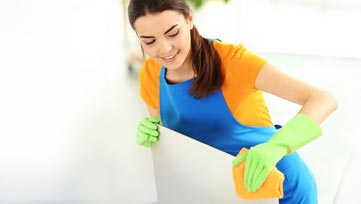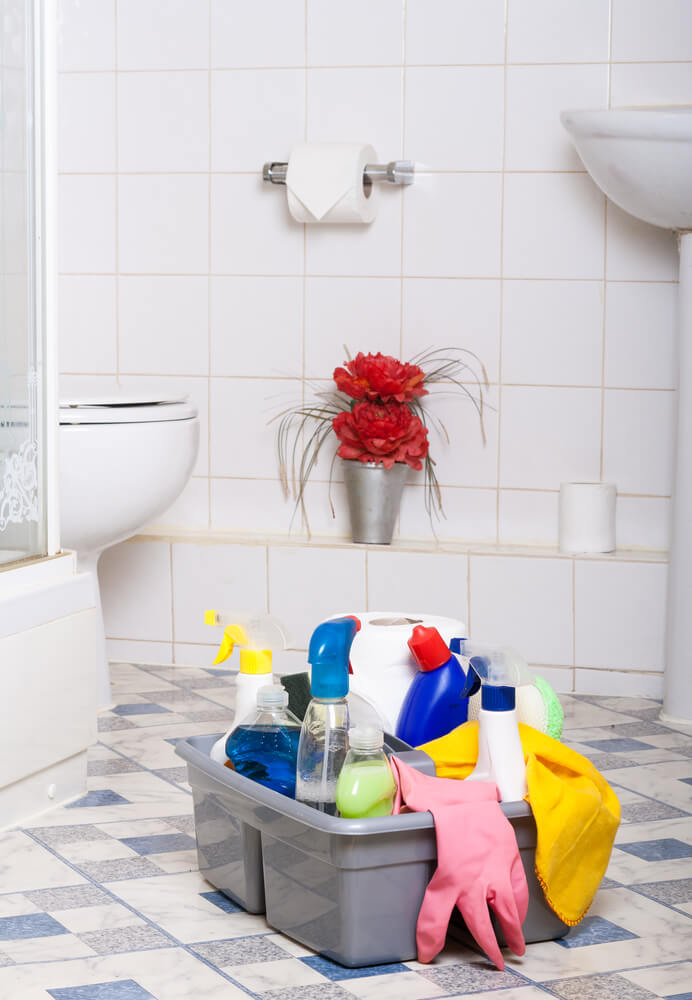
Where Bacteria is Lurking in Your Bathroom
Oddly enough, the one place where we clean up after ourselves is actually the most germ- friendly in the whole house.
Bacteria, mold, and mildew just ADORE the bathroom. The humid, moist environment is the perfect breeding ground for these microscopic nuisance.
In the bathroom, however, there are several areas and items where they seem to have favoured over the others. Let’s play a game and quickly think of three places where YOU think bacteria could be lurking.
The most obvious answers would usually be the floor, the toilet, and door handle. While these are correct, they aren’t the most laden with germs.
Door handle
Unsurprisingly, the door handle can be pretty loaded with bacteria. Sometimes people would use the bathroom and then forget to wash their hands (shocking, we know). Because of this, their hands act as a means of transportation for harmful germs, making their way around the home.
Toilet
The one throne where everyone is a king (or queen)! Believe it or not, the toilet isn’t nearly as dirty as we think it is. What makes it a potential breeding ground for bacteria is when we don’t flush and when we leave the toilet seat cover up when we do flush. Leaving the toilet open whenever we flush lets the E. coli bacteria travel into the air, letting it land wherever they see fit.
Shower area (including the curtain, shower tray, and floor)
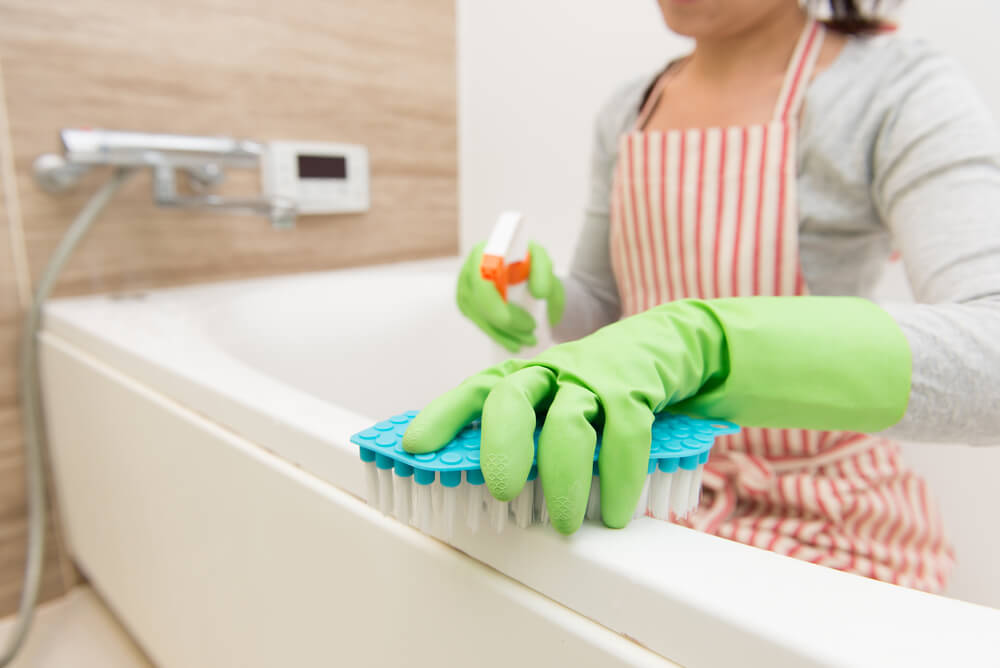
Surprise, this is possibly one of the dirtiest and germiest areas in your entire home. For bacteria and fungi to thrive and multiply, they need an environment that has moisture. The shower area, particularly the floor and curtains, are their go-to places for survival.
You’re probably wondering,
I wash myself in the shower. Doesn’t my soap also wash off the germs on the surface area?
Not exactly.
With all the products used in the shower, you’d think that they’d also have some sort of cleaning effect. You’re not far from wrong, but you’re not exactly right either. Roughly just around 15% of germs gets killed off whenever you use personal cleaning products whenever you take a shower.
Other reasons why bacteria love your shower area include:
● Peeing in the shower (roughly 80% of men do it, while 70% of women are guilty of this)
● Around 65% of people shave in the shower
● 60% of couples have done the deed in the shower
● Brushing your teeth while you take a shower? You’re one of the 35% who do it
● Women clean the shower four times in a month. For men, an average of just twice a month
The shower curtain is also a favourite spot for our microbial frenemies. It doesn’t completely dry as it is pushed to the side most of the time, letting moisture sit and act as a breeding ground for molds and bacteria.
Toothbrush
A bombshell, to say the least. Your toothbrush has been harbouring bacteria within its bristles and handle. Fecal matter has also showed up when a recent study tested the level of bacteria found in toothbrushes. This is why it’s important to close the toilet seat whenever you flush. The fecal matter gets hoisted up in the air, conveniently landing on your toothbrush.
The Deadliest Bacteria
The bathroom is home to one of the most contagious and sometimes deadly bacteria.
Staphylococcus aureus
This bacteria causes skin and internal infections. MRSA (methicillin-resistant staphylococcus aureus) is a variety of the staph bacteria and is, unfortunately a superbug. This means your usual run-of-the-mill antibiotic won’t be able to work its magic against it.
However, it is important to note that the staph bacteria lives happily and harmlessly on our skin and inside our noses. About a quarter of the total population have staph bacteria on their skin, and it’s part of many natural bacteria living within us. If you’re concerned, simple hand washing should be enough.
E. Coli
E. Coli causes diarrhea, stomach ache, and nausea when ingested. The E. Coli, like the Staph bacteria, also lives harmlessly in our bodies, specifically in our gut. It works with other microorganisms to help maintain a healthy and functioning gastrointestinal system.
There are two types of E. Coli bacteria: one that’s harmless and the other is a pathogen, causing all sorts of illnesses to humans. E. Coli becomes more of a health risk when they begin to live on outside surfaces. The only way to prevent this bacteria from causing any harm is to clean frequently and to always wash your hands.
Shigella
A germ that causes shigellosis, an infection that causes diarrhea and can last for up to two weeks even after the diarrhea has subsided. As you might have guessed, the shigella germ is present in the stool of an infected person; it is highly contagious and young children are the most prone to catching this bug.
The shigella germ is transferred from the source (stool) to the mouth — pretty disturbing thought, but quite common in many communities. Usually when food isn’t prepared properly, like if the person did not wash their hands before food preparation, then there is a risk of catching shigellosis.
The infection clears up on its own but there have been cases where antibiotics is needed. The solution? Cleaning surfaces, and proper hand washing, is all it takes.
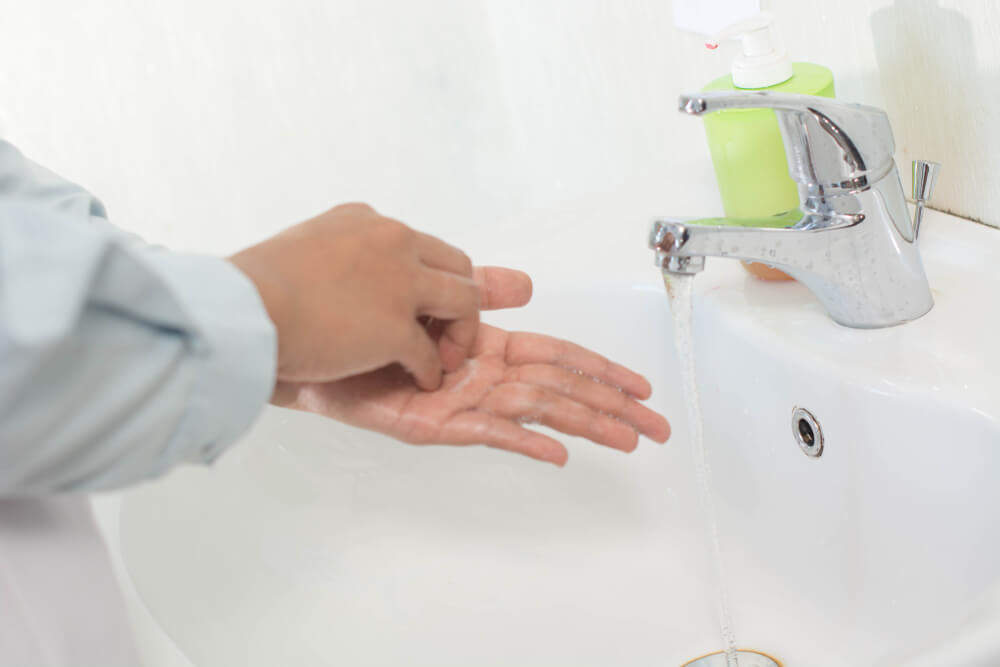
Cleaning Up
We at Pristine Home have a few tips to help you clean your bathroom:
● Clean regularly – We don’t mean just a simple wipe down. Using a disinfectant will help keep those pesky germs and molds at bay. Stick to a weekly schedule to maintain its cleanliness. A deep cleaning is recommended once a month. Give us a call to schedule yours today. If anyone at home has recently gotten sick, like the flu or diarrhea, step up your cleaning game to prevent the spread of infection.
● Get the right products – a cleaning agent that has bleach or hydrogen peroxide will kill all those bacteria. You can make your own bleach solution by mixing one cup of pure bleach with a gallon of water.
● The toilet needs special attention – This is where our wastes go, after all, and biofilm begins to form on the bowl’s surface after just a few hours. This goes for any germ. Scrubbing the bowl with a hard bristle brush, soap, and bleach should do the trick. Do this once a week. Let the bleach sit for at least 10 minutes before rinsing it with soap and water and your toilet should be as clean as a whistle (until someone uses it again).
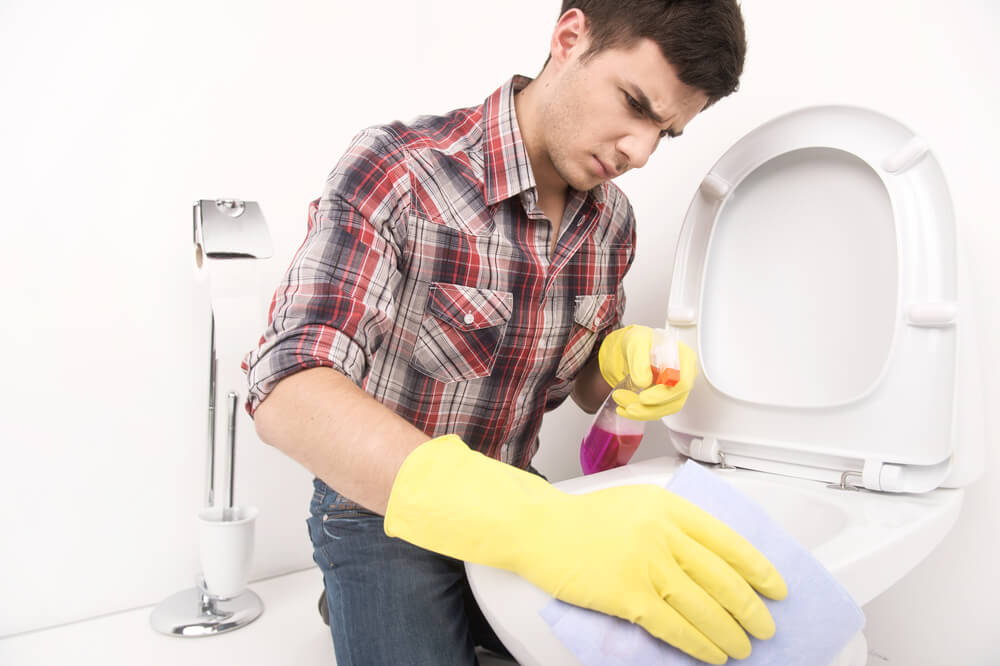
● Draw the curtains – changing your shower curtains every three to six months should prevent molds and fungi from growing.
● Spot clean – if you see a stain here or there, keep a spray bottle filled with bleach solution handy so you can easily clean the affected area.
● Never reuse – throw away sponges after you use them as these are also a breeding ground for bacteria. Buy cheap, disposable sponges and use old towels and clothes as rags.
Pristine Home, Your Cleaning Partner
For cleaning that will work, contact us for a list of services that you might need. We know it’s hard to give your bathroom (and the rest of the house) the attention it deserves and that’s why we have a team of professional cleaners to do it for you. Our cleaners have been trained and experienced in this field and we guarantee a home that is so clean, we’d call it pristine.
